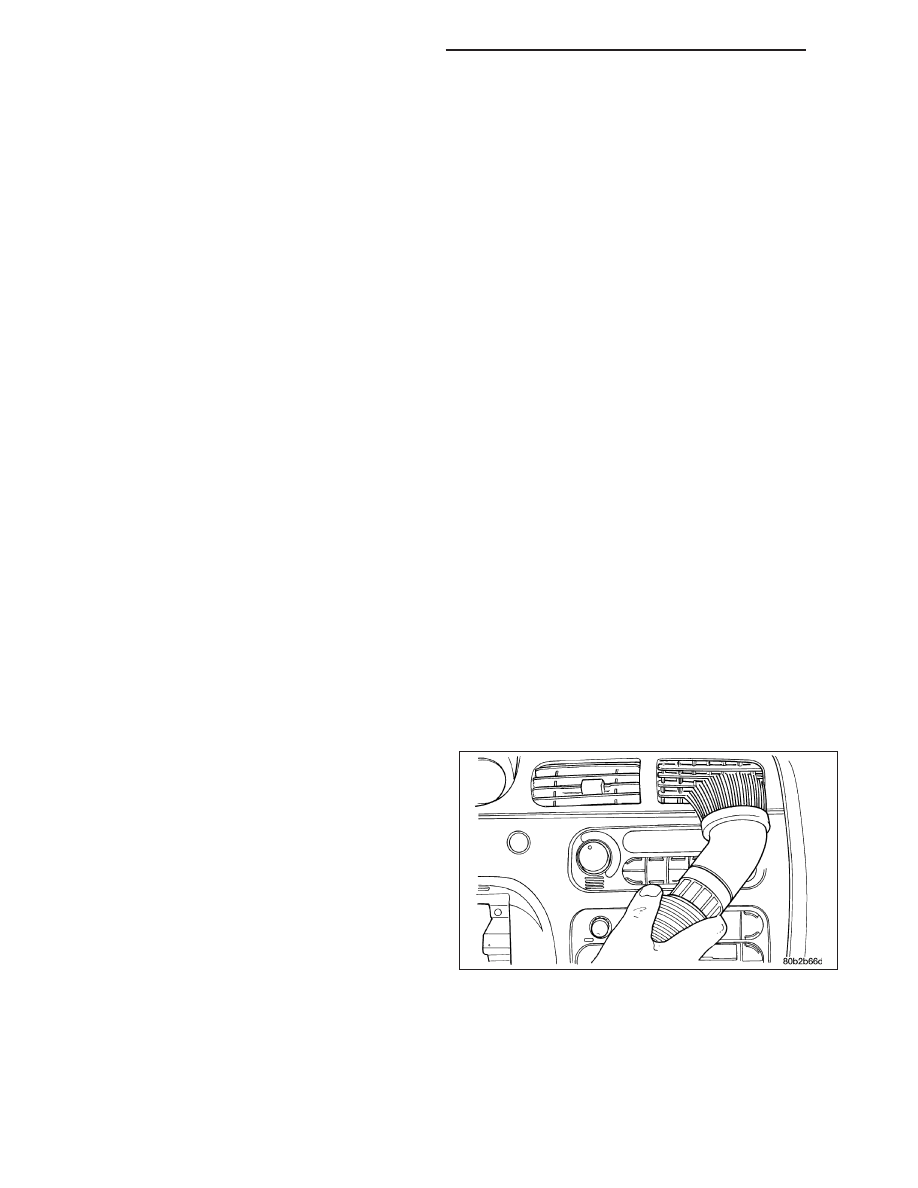Chrysler 300/300 Touring/300C, Dodge Magnum. Manual - part 741

•
Seat Weight Sensor
WARNING: Never replace both the Occupant Restraint Controller (ORC) and the Occupant Classification
Module (OCM) at the same time. If both require replacement, replace one, then perform the Airbag System
test (Refer to 8 - ELECTRICAL/RESTRAINTS - DIAGNOSIS AND TESTING - AIRBAG SYSTEM) before replac-
ing the other. Both the ORC and the OCM store Occupant Classification System (OCS) calibration data,
which they transfer to one another when one of them is replaced. If both are replaced at the same time, an
irreversible fault will be set in both modules and the OCS may malfunction and result in personal injury or
death.
Whether replaced or not, the OCS must be re-zeroed to make sure that the system in within proper parameters to
sense the occupants weight correctly.
WARNING: Do not connect the battery negative cable (Refer to 8 - ELECTRICAL/RESTRAINTS - DIAGNOSIS
AND TESTING - AIRBAG SYSTEM). Personal injury or death may result if the system test is not performed
first.
WARNING: Following successful completion of the Airbag System test procedure, the Occupant Classifica-
tion System Verification Test must be done using a scan tool and the appropriate diagnostic information.
Personal injury or death may result if the system test is not performed.
SEAT BELTS AND TENSIONERS
After a frontal impact where an airbag has been deployed due to a collision, the following MUST be replaced:
•
Front Seat Belt and Retractor (driver and passenger) with integral Tensioners.
WARNING: Do not connect the battery negative cable (Refer to 8 - ELECTRICAL/RESTRAINTS - DIAGNOSIS
AND TESTING - AIRBAG SYSTEM). Personal injury or death may result if the system test is not performed
first.
All other seat belts should be closely inspected for cuts, tears, fraying, or damage in any way following any frontal
impact or airbag deployment. The other seat belts are to be replaced when visible damage is incurred. Inspect the
Lower Anchors and Tether for CHildren (LATCH) child restraint anchors for damage after an impact event and
replace as needed.
CLEAN UP PROCEDURE
Roll or fold the airbag towards its mounting point (i.e.
instrument panel, steering wheel, knee blocker, cur-
tain, or seat back). Then tape the ripped cover over
the deployed airbag if applicable.
Use a vacuum cleaner to remove any residual powder
from the vehicle interior. Work from the outside in to
avoid kneeling or sitting in a contaminated area. Vac-
uum the heater and A/C outlets as well. If the heater
or air conditioner was in RECIRC mode at time of air-
bag deployment, operate blower motor on low speed
and vacuum powder residue expelled from the heater
and A/C outlets. Multiple vacuum cleaning may be
necessary to decontaminate the interior of the vehicle.
HANDLING NON-DEPLOYED SUPPLEMENTAL RESTRAINTS
At no time should any source of electricity be permitted near the inflator on the back of a non-deployed airbag or
seat belt tensioner. When carrying a non-deployed airbag, the trim cover or airbag cushion side of the unit should
be pointed away from the body to minimize injury in the event of an accidental deployment. If the airbag unit is
placed on a bench or any other surface, the trim cover or airbag cushion side of the unit should be face up to
minimize movement in the event of an accidental deployment.
8O - 370
RESTRAINTS - SERVICE INFORMATION
LX